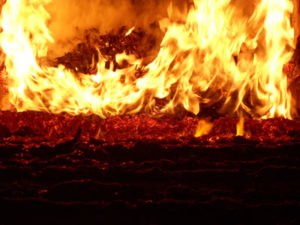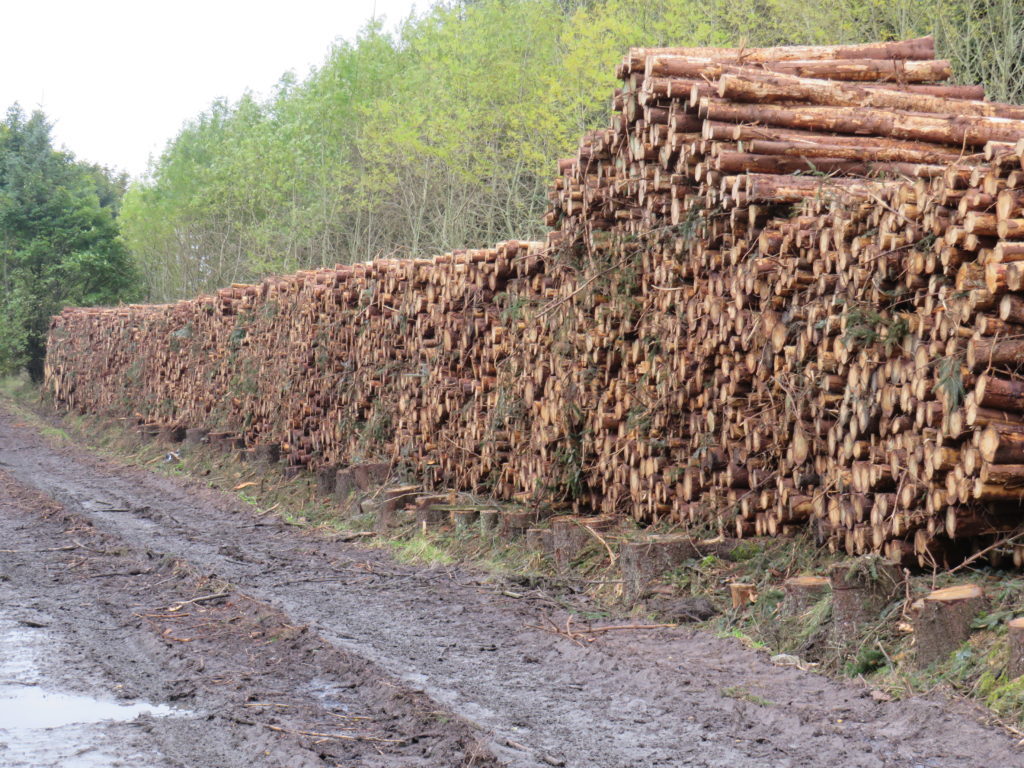RHI: Keeping the paperwork right (FWN 30)
26 March 2018Among the farming community are many biomass boiler owners who have decided to produce their own woodfuel.
A sensible choice as they have both the space to store raw material (roundwood) and space for the woodfuel product (chip or firewood). For those claiming the Renewable Heat Incentive (RHI), it is important to make sure that everything in their supply chain fits the RHI sustainability criteria, and probably, more importantly, you have suitable evidence to prove it. This applies to both those who are just now applying for the RHI and those already long registered.
In order to claim the RHI for biomass installations, you have to prove that your fuel meets the minimum carbon footprint and something ambiguously named the “Land Criteria”. For users buying their woodfuel from an RHI approved supplier registered on the Biomass Suppliers List (BSL), the supplier has already done this, therefore the user simply states the BSL number of their supplier. However, users wishing to produce their own fuel will need to prove their fuel meets both criteria. For woody biomass, evidence and paperwork for the carbon criteria are not usually a problem, land criteria can appear to be more so. It should be pointed out that evidence is only required if/when you are audited, however, it is critical that all the evidence is in place at all times, as failure to produce evidence could result in a compliance notice.
The first choice is whether to report directly to Ofgem (only for those in the non-domestic RHI) or register on the BSL. If you report directly to Ofgem you need to calculate and report your carbon every quarter using a rather complex piece of software, but it’s free. The simpler option of registering on the BSL carries a fee (£25-£150 a year depending on timber source and tonnages) but only requires a relatively simple update once a year, if your basic supply chain does not change then this is a simple declaration that nothing has changed.
The next option depends on where you get your timber, if it’s all coming from your own woodlands – any woodland you have a right to harvest timber, through ownership, tenancy or otherwise, and is no more than 50 miles from the sub-1MW boiler – then you can set yourself up as a “self-supplier”, this requires no evidence for either carbon or land criteria, simply evidence that you have the legal right to take the timber e.g. deed plan, management plan (a felling licence is required though, although not necessarily at the time of applying to BSL).
A quick note on plans: Long Term Forest Plans (LTFP) are generally for forest areas of over 100ha and when approved, come with felling approval for the first 10 years; a separate felling licence is not required. Woodland Management Plans (WMP) are typically for woods of less than 100ha but do not come with felling approval; although the Forestry Commission approves the WMP, it must be accompanied by a felling licence.
If you are purchasing any timber (even if topping up your own timber from your own woodland), you are then classed as a “producer-trader”, this requires evidence of both the carbon and the land criteria. Depending on whether you report directly to Ofgem or register on the BSL the process is different, however, the evidence required is the same for both.
Land Criteria
The land criteria are aimed to ensure that all biomass fuels are socially and environmentally sustainable. On a broad level, they are the same whether it is timber from the UK or palm oil from far less regulated regions of the world. In effect for most woody material this means that all of it has to be legal (and be able to prove this) and at least 70% of that from provably sustainable sources.
Understandably there is some confusion over the requirements to meet and evidence the RHI land criteria. It is beyond the scope of this short note to explain all the different permutations, details and complexities involved, but we will try and cover some of the most likely situations.
The simplest route to RHI compliance would to buy 100% UK timber that has full FSC / PEFC / Grown-in-Britain (GiB) Certification, as certification covers both the legality and the sustainability; or an approved LTFP. However, this is not always possible, especially if you want to take advantage of local timber from a small scale operation.
In reality, UK timber is sustainably managed regardless whether it has certification or not, by law UK forestry and licencing is carried out to the UK Forestry Standard which is the UK sustainability standard, therefore any tree felled with a felling license or under a LTFP has been granted and judged against this. In the UK there is only a very small proportion of illegally felled timber, low enough to discount it.
Under the rules of the RHI, a felling licence alone is not necessarily acceptable as evidence of sustainability; sustainability can only be proved by it coming from woodland with certification or a Forestry Commission approved management plan – either a LTFP or a WMP.
Therefore if considering buying timber you need to make sure it can meet these evidentiary requirements before you buy it; if it’s fully FSC / PEFC / GiB certified, or has a LTFP, then the reference number is all you need. If not, you must be able to obtain the Felling Licence number and the WMP approval number.
Remember you are only able to use a maximum of 30% of your woodfuel that is only covered by a felling license only; the rest has to have certification or LTFP, or felling licence and WMP, approval numbers.
As a side note, woodland owners wishing to sell timber into the woodfuel market would be wise to get a management plan done to increase their likely market. Below is a list of examples of the evidence required for the RHI woodfuel criteria;
Carbon Criteria Evidence
| Proof Required | Suggested Evidence |
|---|---|
| Distance from woodland to processing site | All delivery notes / invoices with woodland location on it; (grid reference or name that can be found on a map). For BSL, typical or average distance is fine but err on the high side; for direct reporting need to calculate average for that particular quarters woodfuel. |
| Moisture content of raw material and dried product (only if forced drying) | A log book recording the results of your own moisture tests; any lab test results. |
| Delivery distance (only if supplying to others) | All delivery notes to customers with customer address |
Land Criteria Evidence
| Proof required | Suggested evidence |
|---|---|
| Location of woodland | As per carbon criteria |
| Legality | Felling licence number or FC approved LTFP number or any FSC/PEFC/GiB certification |
| Sustainability | Felling license number which has 5-10 years duration – for up to 30% of timber; FC approved LTFP number or WMP number or FSC/PEFC Chain-of-Custody certificate number (“Controlled Wood” or “FSC Mix” certification may not be sufficient by themselves) |
Timber Delivery Notes
The delivery note or invoice for purchased timber is almost the only evidence you need, as long as it shows the correct details as outlined above. We would suggest you contact your supplier before ordering to ensure as much of the following detail as possible is on the invoices or delivery notes.
- Timber supplier name and address
- Timber supplier FSC/PEFC/GiB number (if relevant)
- Weight
- Confirmation that that particular delivery is from FSC/PEFC certified sources
- Woodland location (woodland name to match that on the felling license/management plan/ FSC/PEFC certificate may do)
- If not FSC/PEFC/GiB certified, then felling license and WMP number, or LTFP number
Remember that only up to 30% of your wood-fuel supply documentary evidence can rely on a felling licence alone. Further guidance can be found here.
John Farquhar, SAC Consulting
Sign up to the FAS newsletter
Receive updates on news, events and publications from Scotland’s Farm Advisory Service


